The loss of SMS Grosser Kurfürst, 1878
Two maritime disasters which involved large loss of life occurred in British waters in 1878. One was about the now-forgotten disaster on the Thames in September 1878 when the excursion paddle steamer Princess Alice was sunk in a collision with the loss of some 640 lives (about which a blog will appear soon) and the other was the sinking of the German ironclad Grosser Kurfürst in a collision in the English Channel, taking with her some 270 of her crew.
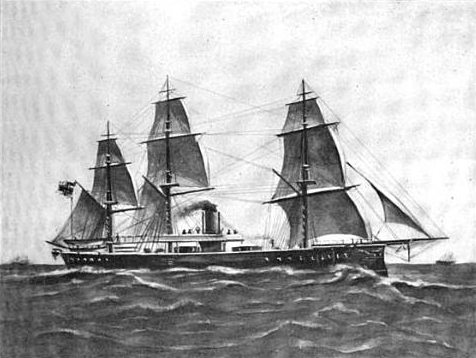
 SMS Grosser Kurfürst under sail
SMS Grosser Kurfürst under sail
In this period Germany’s navy was still one of the second rank, intentionally so since the “Iron Chancellor”, Bismarck, saw the newly established German Empire as primarily a land power, with no significant maritime ambitions. The intention to build on a scale to challenge the Royal Navy was still some two decades in the future and the emphasis was primarily on coastal defence. A small number of high-quality ironclads formed the backbone of the fleet and by the late 1870s there was increasing awareness of the potential of mines and torpedo craft to supplement them.
It should be noted that in this period naval theorists in Germany, as practically everywhere else, saw the ram as a viable offensive weapon. This stemmed from a fixation on the extensive ramming involved in the Battle of Lissa in 1866 when the Austro-Hungarian and Italian fleets were pitted against each other. Sinking in this manner of the one of the principal Italian ironclads represented the turning point of the battle. For the next four decades the majority of naval vessels, large and small, were built with ram bows. What was insufficiently recognised was that the circumstances which allowed close engagement at Lissa were unlikely to occur in the future, since the growth in power and accuracy of naval guns meant that combat would occur at ever increasing ranges. Despite this rams continued to be viewed by many as effective weapons and as late as 1896 Britain’s Arrogant class of protected cruisers were specifically designed to allow ramming, manoeuvrability being enhanced by provision of an extra rudder at the bows, which were themselves strengthened for impact.
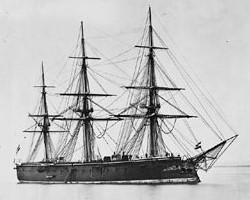
SMS König Wilhelm at anchor
In practice the ram proved to be more of a hazard to friends than to enemies, and there were numerous cases of serious damage being inflicted, sometimes fatally, in collisions. The best known of these was the loss in 1893 of HMS Victoria when she was rammed by HMS Camperdown. Fifteen years before this however a comparable disaster was to occur in sight of the English shore, on this occasion involving the newly completed German ironclad Grosser Kurfürst.
The Grosser Kurfürst, a ship-rigged central-citadel ironclad, also powered by a 500 hp steam engine, was of 7596 tons and 316 ft length. She carried the four 10-inch guns of her main armament in two turrets amidships. She had been commissioned at Wilhelmshaven on May 6th 1878 and she set off thereafter on a summer training cruise, in company with her close sister and squadron flagship Preussen and the older central battery ironclad König Wilhelm. The latter was of 10591 tons and 368 ft length, her principal armament being 18 9.4-inch muzzleloaders located in a central battery. She had been built at the Thames Ironworks in London in the mid-1860s and had been upgraded since.

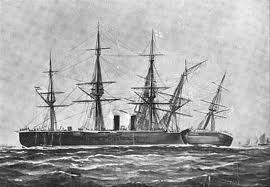
The moment of collision
On May 31st 1878 all three vessels were steaming westwards through the Straits of Dover, König Wilhelm and Preussen in line, with Grosser Kurfürst off to starboard and thus closer to the English coast. Just off Folkestone the three ships encountered two sailing vessels in their path. Poor manoeuvring to avoid these craft found König Wilhelm heading directly for Grosser Kurfürst, with insufficient time available to turn away. Impact was unavoidable and König Wilhelm’s ram smashed a large hole in the Grosser Kurfürst’s flank. Damage control was still an art of the future and inadequate sealing of Grosser Kurfürst’s watertight bulkheads caused her to sink in eight minutes. Out of a crew of 500 some 270 were lost.
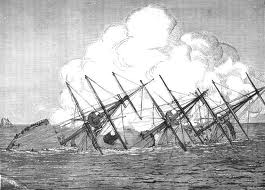
 SMS Grosser Kurfürst sinking
SMS Grosser Kurfürst sinking
The composer Arthur Sullivan, of Gilbert and Sullivan fame, witnessed the accident from a ferry he was sailing on, en route to Paris. He wrote: “I saw it all – saw the unfortunate vessel slowly go over and disappear under the water in clear, bright sunshine, and the water like a calm lake. It was too horrible – and then we saw all the boats moving about picking up the survivors, some so exhausted they had to be lifted on to the ships”.
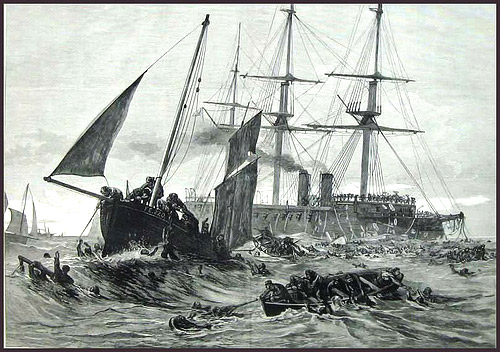
 Fishermen rescuing survivors, König Wilhelm in background
Fishermen rescuing survivors, König Wilhelm in background
König Wilhelm was also badly damaged in the collision, suffering severe flooding forward. Her captain considered beaching her to prevent her sinking, but was assured that her pumps could hold the flooding to an acceptable level. The ship therefore made for Portsmouth, where temporary repairs could be effected to allow the ship to return to Germany.
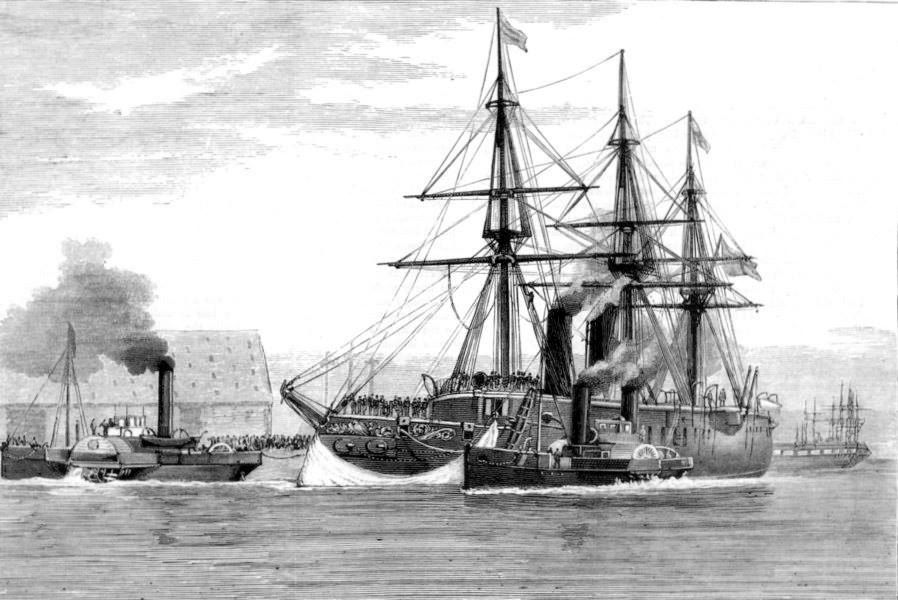
 König Wilhelm entering harbour after the collision (note sail wrapped across lower bow to limit water ingress)
König Wilhelm entering harbour after the collision (note sail wrapped across lower bow to limit water ingress)
In the aftermath of the collision, the German navy held a court martial for Rear Admiral Batsch, the squadron commander, and for Captains Monts and Kuehne, the commanders of the two ships involved, along with Lieutenant Clausa, the first officer aboard Grosser Kurfürst, to investigate the sinking. Extensive finger-pointing followed, aimed at sharing or dodging responsibility, and a series of three further court-martials followed, before the matter was laid to rest.
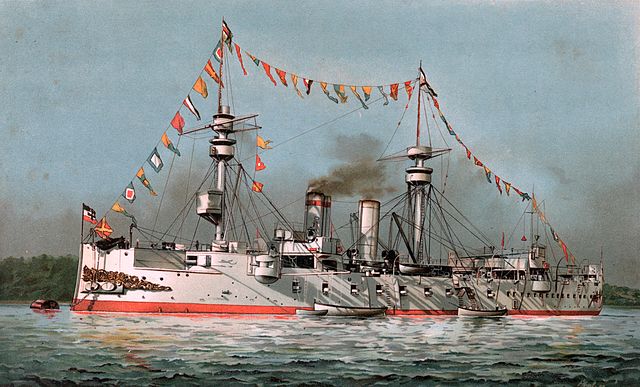
 König Wilhelm as a training ship,early 1900s
König Wilhelm as a training ship,early 1900s
König Wilhelm was to have a enjoy a long career thereafter, being rebuilt and rearmed as a heavy cruiser in 1895/6 (and looking wholly unlike her earlier self) and later serving as a training vessel, only finally being scrapped in 1921.
The loss of the Grosser Kurfürst was a tragedy in itself, but the other tragedy associated with her loss was that the lessons of the disaster were not learned and that many more ships were to be sunk, and many men were to die needlessly, before the folly of the ram bow was to be recognised.
Britannia’s Gamble
The sixth Dawlish Chronicles Novel is earning 5-Star Reviews
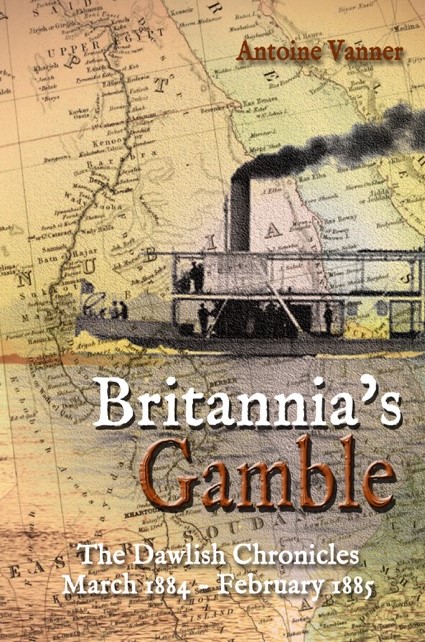 As always, I, Antoine Vanner, feel genuinely grateful to readers who have taken the time to post reviews of my work – they help me a lot. It’s been gratifying to see the titles of the reviews of Britannia’s Gamble as well as their contents. Here are a few of the titles:
As always, I, Antoine Vanner, feel genuinely grateful to readers who have taken the time to post reviews of my work – they help me a lot. It’s been gratifying to see the titles of the reviews of Britannia’s Gamble as well as their contents. Here are a few of the titles:
“A gritty Victorian naval thriller with heart and soul”
“Vivid sense of suspense and excellent historical notes”
“Will not disappoint readers of the previous Dawlish Chronicles”
“Another page turner”
“A beautiful weaving together of history and fiction to create and action backed adventure”
“The master of the unfair obstacle is assigned the unforgiving gamble”
“Once again Vanner tells a great story really well.”
Click here to read the opening chapters.
If you are a Kindle Unlimited Subscriber you can read it immediately without further cost.
Click below for details of hard copy and Kindle editions:
For Britain
For United States, Canada and elsewhere
Registering for the Dawlish Chronicles mailing list, by clicking on the banner below, will keep you updated on new books and facilitates e-mail contact between Antoine Vanner and his readers for discussion of issues arising.
Suggestions and comment are always welcome and all emails are replied to. Free short stories, available only to those on the list, are also made available at intervals.

